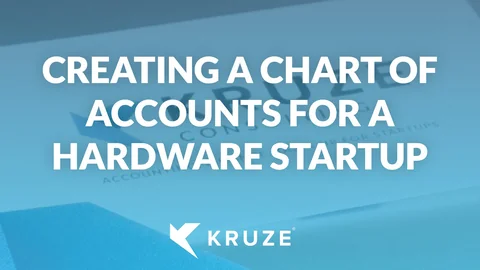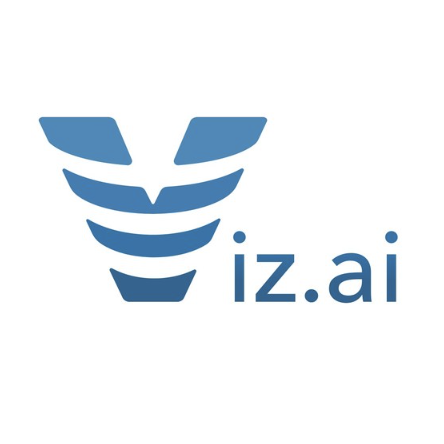
Launching a hardware startup, designing groundbreaking products, and forging strategic partnerships is exciting. But you can’t overlook the crucial foundation of financial management. As part of that, a well-built chart of accounts (COA) is essential. Many of the accounts are common to most businesses, but some need to be tailored to the distinct requirements of your hardware startup.
Hardware startups need different accounts than other startups
Hardware startups focus on designing, developing, manufacturing, and selling physical products, typically in the realm of technology or electronics. These startups often create innovative devices or equipment like consumer electronics, industrial machinery, medical devices, or specialized hardware components.
Unlike software startups that primarily deal with digital products, hardware startups deal with tangible goods that often involve complex manufacturing processes, supply chain management, and physical distribution logistics. They typically require substantial investment in research, development, prototyping, and production facilities. That means these businesses need accounts that reflect the physical requirements of building products.
What accounts could a hardware startup use?
A hardware startup will have some unique accounts that other businesses may not need. Kruze Consulting uses six-digit accounting codes in our charts of accounts, which allows us to create more unique accounts in each category, to capture more information. We have more detail on charts of accounts here.
We use the following categories and number groupings:
| Current Assets | 100000 -199999 |
| Liabilities | 200000 - 299999 |
| Equity | 300000 - 399999 |
| Sales | 400000 - 499999 |
| Cost of Good Sold | 500000 - 599999 |
| Sales, General, and Administrative Expenses | 600000 - 699999 |
| Research & Development Expenses | 700000 - 799999 |
| Other Operating Expenses | 800000 - 899999 |
| Other Income / Expenses | 900000 - 999999 |
Under these accounts, you’ll find sub-accounts that roll up into the main asset category. The first digit of each account number indicates which group the account belongs to.

A chart of accounts for a hardware startup will include accounts for things like inventory and manufacturing equipment. The table below shows some of the different types of accounts a hardware firm may need, along with some of the more standard account types. The account numbers follow Kruze’s standard numbering system, but individual account numbers could vary.
NOTE: This is not a comprehensive list – this is just a sample of the accounts your hardware company may require.
Hardware startup chart of accounts - some specific accounts
| Account Number | Account Name | Account Type | Detail Type |
| 104000 | Cash on Hand | Current Assets | Checking |
| 105000 | Cash in Bank | Current Assets | Checking |
| 120000 | Accounts Receivable | Current Assets | Accounts Receivable |
| 131100 | Prepaid Expenses | Current Assets | Prepaid Expense |
| 139000 | Inventory | Current Assets | Inventory |
| 156000 | Property, Plant, and Equipment | Current Assets | Furniture & Fixtures |
| 159000 | Accumulated Depreciation | Current Assets | Accumulated Depreciation |
| 210000 | Accounts Payable | Liabilities | Accounts Payable |
| 235100 | Accrued Expenses | Liabilities | Accrued Expenses |
| 301000 | Common Stock | Equity | Common Stock |
| 301002 | Common Stock - Additional Paid-In Capital | Equity | Additional Paid-in Capital |
| 309000 | Retained Earnings | Equity | Retained Earnings |
| 400000 | Sales Revenue | Sales | Sales |
| 401000 | Service Revenue | Sales | Service Revenue |
| 500000 | Cost of Goods Sold | Cost of Goods Sold | Cost of Goods Sold |
| 502002 | Electrical | Cost of Goods Sold | Utilities |
| 600000 | Sales, General, and Administrative Expenses | SG&A Expense | SG&A Expenses |
| 601000 | Marketing Expenses | SG&A Expense | Marketing |
| 614000 | Rent Expense | SG&A Expense | Rent |
| 700000 | Research and Development Costs | R&D Expense | Research & Development |
| 810000 | Depreciation Expense | Other Operating Expenses | Depreciation |
| 901000 | Interest Income | Other Income / Expenses | Interest Income |
In a hardware startup’s chart of accounts, several unique accounts might be included to accurately reflect the specialized nature of the industry.
Some of these accounts could include:
- Inventory. Tracks the cost of raw materials, components, and finished products held by the company for sale.
- Technology Development Costs. Accounts for expenses related to the research, development, and testing of new hardware products.
- Cost of Goods Sold (COGS). Records the direct costs associated with producing or acquiring the computer hardware products sold by the company, including materials, labor, and overhead.
- Depreciation Expense. Reflects the allocation of the cost of property, plant, and equipment (such as manufacturing machinery and equipment) over their useful lives.
- Research and Development (R&D) Expenses. Tracks expenditures incurred in designing and improving computer hardware products, including salaries of R&D staff, materials, and equipment.
- Sales Revenue. Records income generated from the sale of computer hardware products to customers.
- Service Revenue. Tracks revenue generated from providing post-sale services, such as maintenance, warranties, or technical support.
- Marketing Expenses. Accounts for costs associated with advertising, promotion, and other marketing activities to promote the company’s computer hardware products.
- General and Administrative (G&A) Expenses. Includes overhead costs not directly associated with manufacturing or sales, such as salaries of administrative staff, office rent, utilities, and insurance.
- Utilities Expense. Tracks expenses related to utilities necessary for operating manufacturing facilities and office spaces, such as electricity, water, and gas.
- Rent Expense. Accounts for the cost of leasing manufacturing facilities, warehouses, and office spaces.
- Royalties and Licensing Fees. Records payments made to third parties for the use of patented technology, intellectual property, or software in the company’s computer hardware products.
These unique accounts provide insight into the financial dynamics of a computer hardware startup and help management make informed decisions to drive growth and profitability in this competitive industry.
The process of building a chart of accounts for your fintech startup begins with a review of your business to create a list of the types of accounts you’ll need.
To find out more about setting up a COA for your business, contact us.








